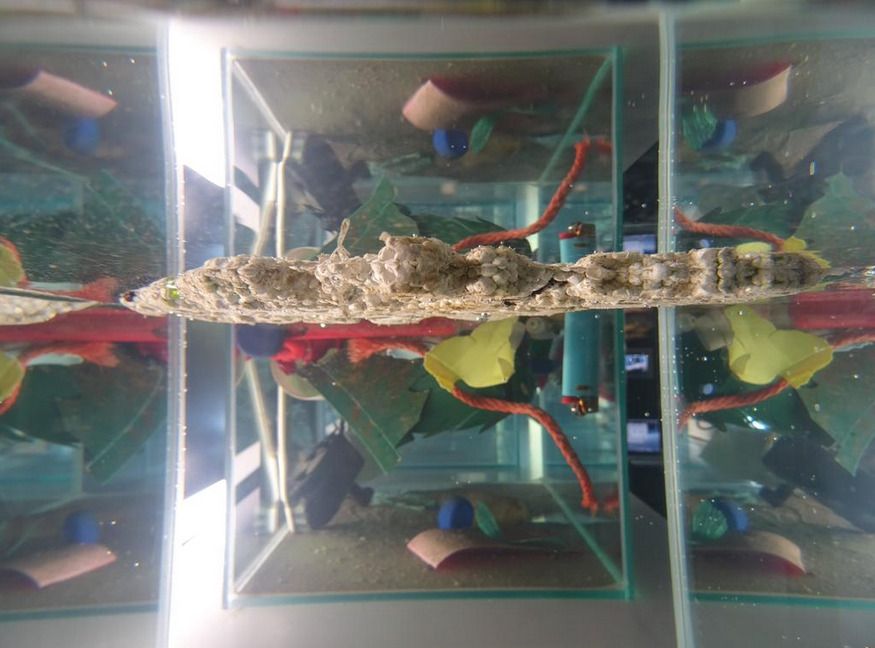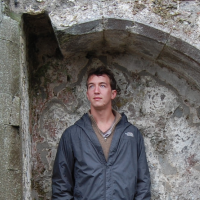Centuries have passed since Venice assumed its form as a tangled archipelago city linked by boats and bridges. Update the clothes, draw in a few iPhones, and the floating city of the Enlightenment is easily recognized as today’s own.
What a tribute to the wonder of the place, then, that its inertness continues to inspire new thoughts about urbanity. Under the gaze of Italo Calvino, whose 1972 novel Invisible Cities conjured wild permutations of the metropolis, Venice revealed a hundred fantasies, radical experiments in design and in life.
Few Venetian imaginings are as strange and stimulating as those of Rachel Armstrong, an English architect who specializes in radical visions. One of the world’s rare professors of experimental architecture, Armstrong speaks a prophet’s cloudy dialect. In her work, she said, “architecture becomes a visionary vehicle, as opposed to a particular set of moods.”
In “Future Venice,” a project that began in 2010, Armstrong proposed injecting chemicals beneath the city that would grow into a reactive limestone reef, in order to arrest the settlement’s slow descent into the lagoon. Last week, she was back in Venice at the Architecture Biennale, where as the scientific curator for the Azerbaijan Pavilion, she outlined “Future Venice 2,” a scheme for an island composed of waterborne plastic and microbes. That exhibit, called “Vita Vitale” and curated by Artwise, opened on Saturday.
The parameters of experimental architecture, a term coined by Peter Cook in an eponymous 1970 book and elucidated by the architect and artist Lebbeus Woods, are necessarily fluid. “My own contribution,” Armstrong told me, “has been to take the avant-garde ideas of architecture into a laboratory space.”
In practice (though the practice, in this case, is mostly theory), that means Armstrong ponders how chemical and biological processes can be put to use in buildings, cities and landscapes. She proposed for the first Future Venice, for example, using protocells — droplets of oil in water — to release a responsive chemical mesh beneath the surface of the city. These “dynamic droplets,” she wrote in 2013 in the journal Artificial Life, “provided a means of introducing temporal and spatial order in the system with the potential for chemical programmability.” Protocells aren’t “alive,” but they might be able to assume lifelike, reactive behavior in certain situations.
The second iteration of that project takes the form of a hypothetical lagoon island built of plastic waste whose “agglutinating plastics,” the official description begins, “invite algae colonies, such as diatoms with heavily silicon skeletons, to make them their home. As rafts of biofilms weave their membranes around the plastics, they produce long yards of thread-like materials, which are knitted into mats by the tides and eddies.”
The result? A living garbage island infested with mosquito larvae.

This display at the “Vita Vitale” exhibit at the Architecture Biennale in Venice shows the trapping of marine plastics using natural materials. (Photo by Rachel Armstrong)
Needless to say, this is not a utopian vision of the city. It’s a call to heed a new era of building. “We’re sitting on the cusp of a different era in human development, which I would call the ‘Ecological Era,’” Armstrong explained. “I don’t think it’s just about the greening of things. What I would call the ecological era is the understanding that the world is dynamic and in flux.”
This does not require a manifesto; on the contrary, solutions that employ natural and chemical techniques — Armstrong likes to talk, for example, about the potential for self-repairing buildings — must be devised with particular climates in mind.
An early, real-life example of a “living architecture” project is the BIQ House in Hamburg, Germany. The building has 129 “bioreactors” — exterior glass panels — that will grow algae and shade the interior. Algae pulp is periodically removed and fermented to create a gas that can produce energy for the building.
Armstrong’s philosophy can be seen as a kind of rebuttal to Modernist urban thinking, with its prescriptive doctrines and controlling designs. Her vision for architecture, like Jane Jacobs’ vision of the city, opens the door to chance. The idea that we must tolerate some degree of volatility in our structures (as we happily do in our street life) is not likely to sit comfortably with most urbanites.
But it’s well in line with the zeitgeist that cities should better adapt to the caprices of nature. A prominent example is the current discussion around “resiliency,” that catchall term for building to survive disasters. In the Northeast United States, that has meant a growing awareness that water, in some places, cannot simply be kept at bay. Wetlands instead of walls; drainage instead of dams.
“There has been the idea that there’s a conflict between the natural and the human,” Armstrong said. “In the long term we have a shared goal: our mutual persistence.”
The Science of Cities column is made possible with the support of the John D. and Catherine T. MacArthur Foundation.

Henry Grabar is a senior editor at Urban Omnibus, the magazine of The Architectural League of New York. His work has also appeared in Cultural Geographies, the Atlantic, The Wall Street Journal and elsewhere. You can read more of his writing here.
Follow Henry .(JavaScript must be enabled to view this email address)





_1200_700_s_c1_600_350_80_s_c1.jpg)







